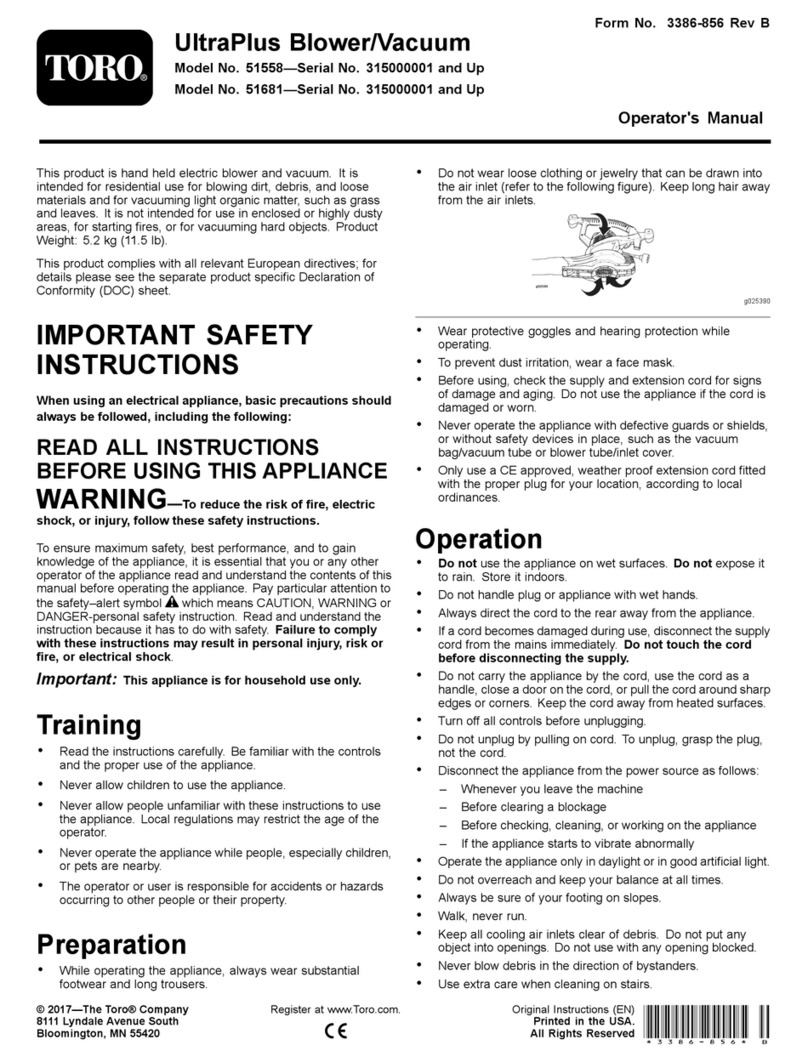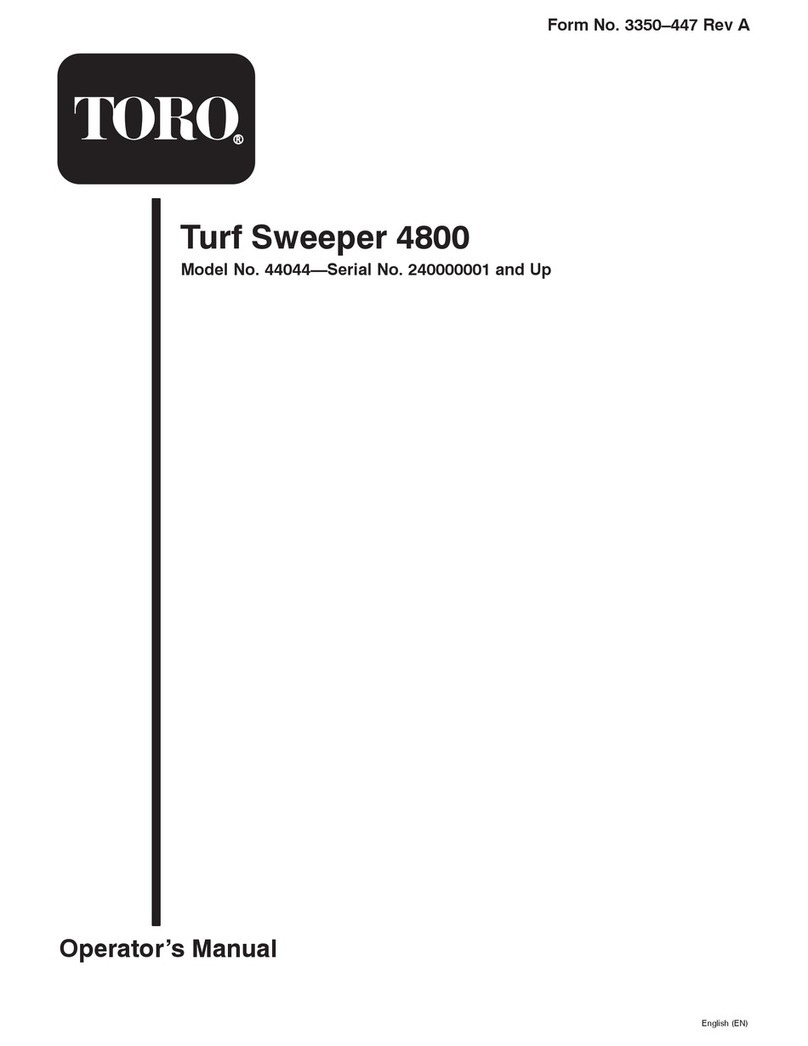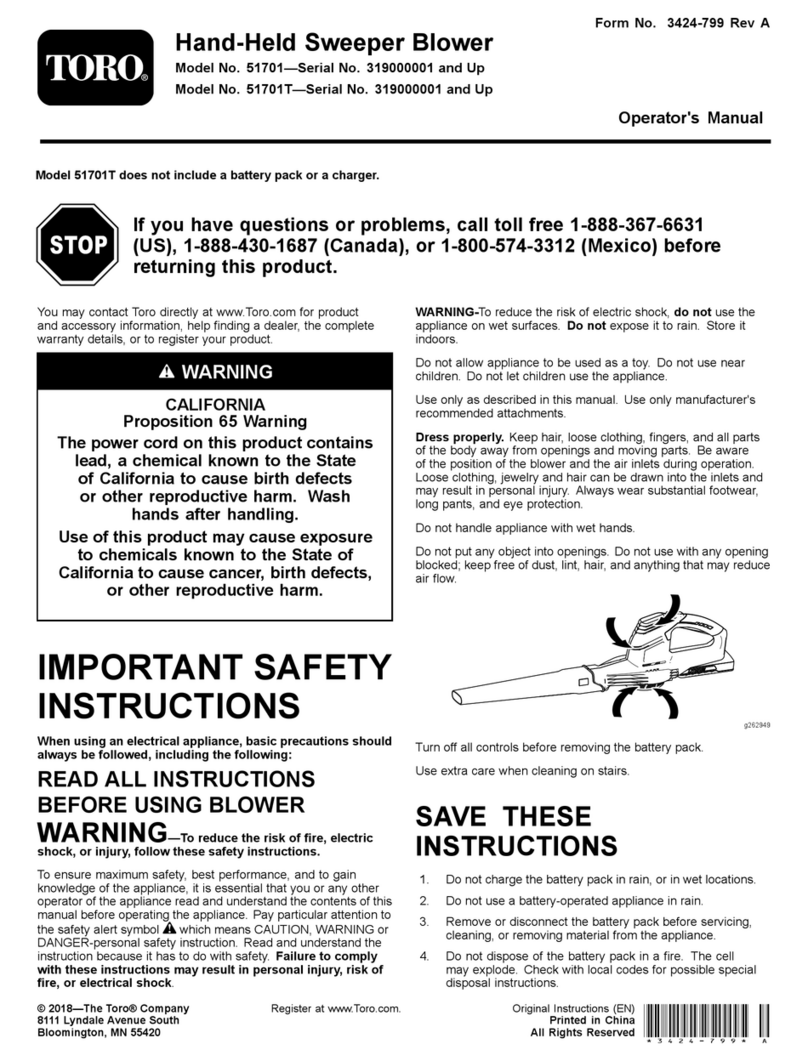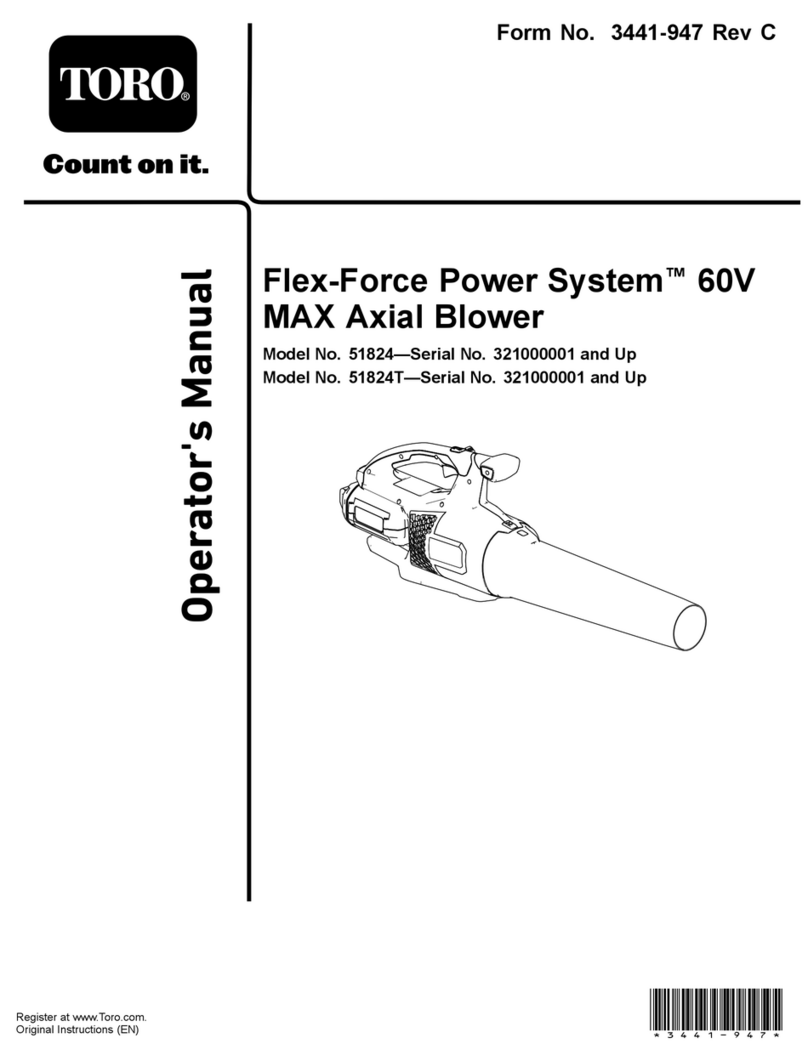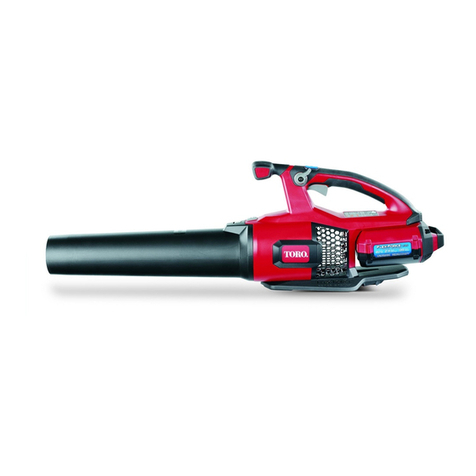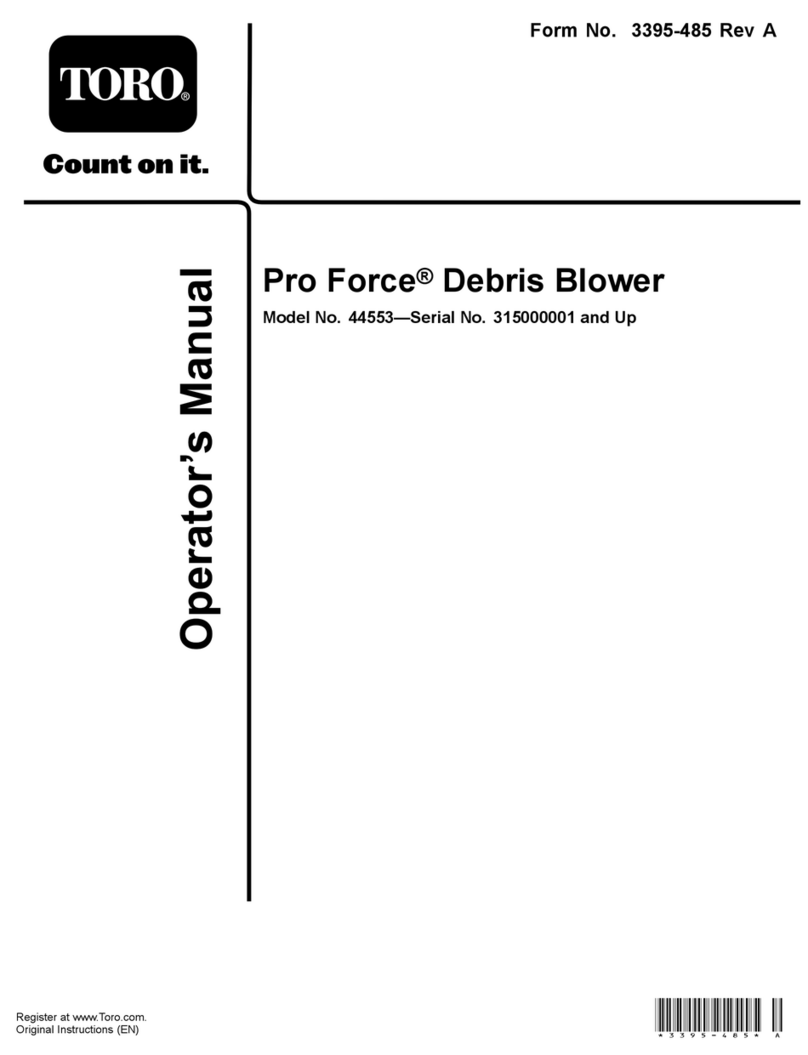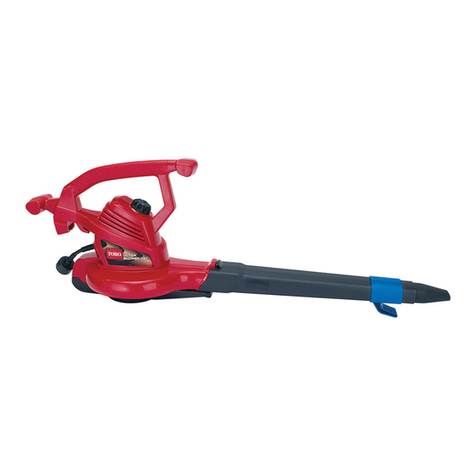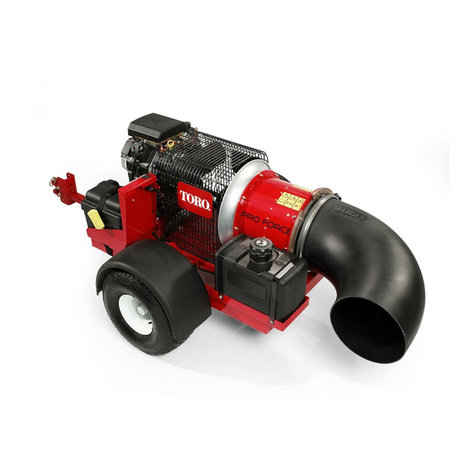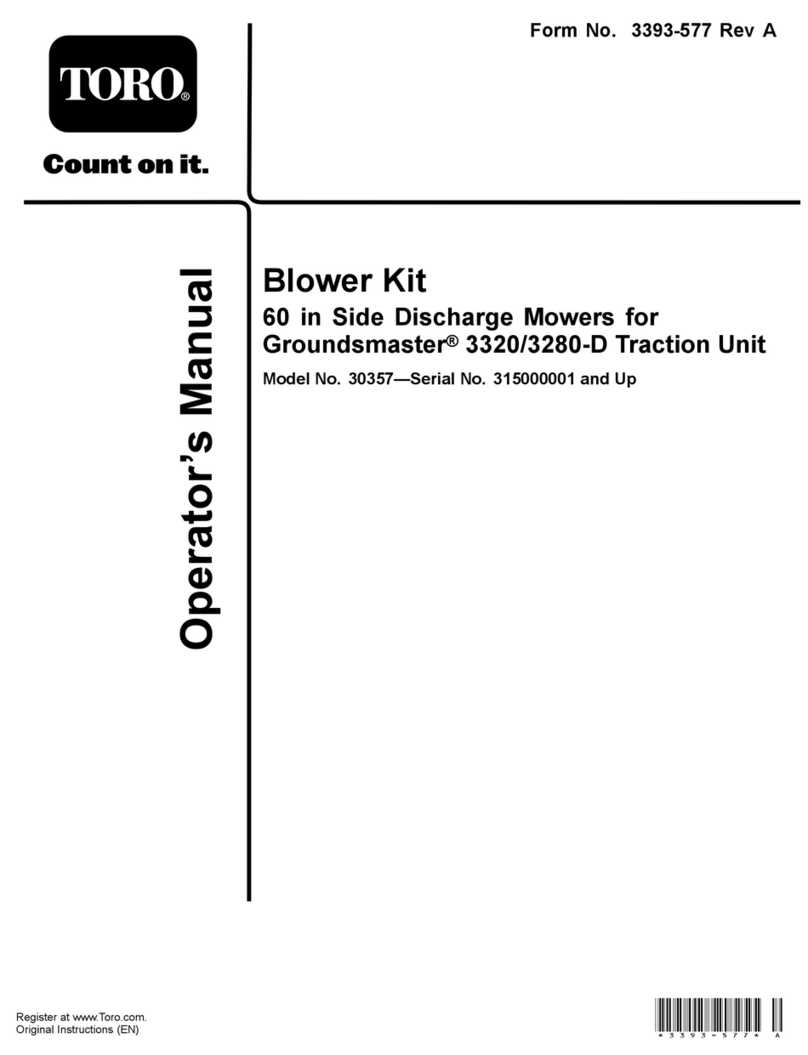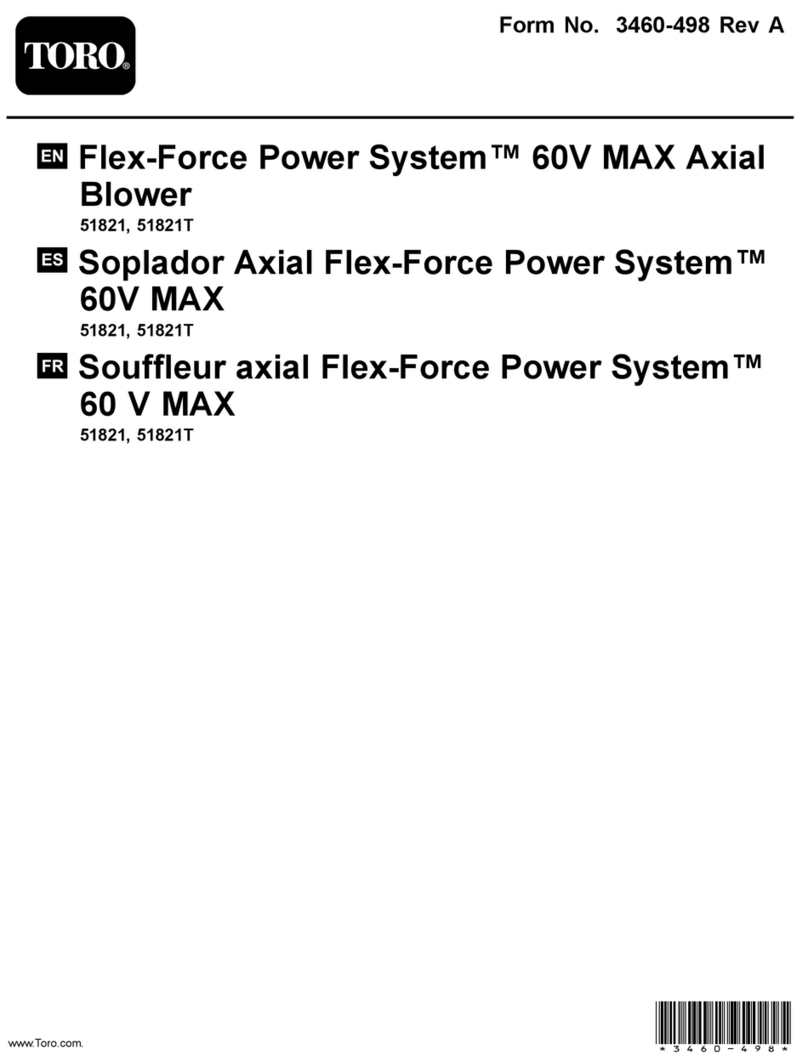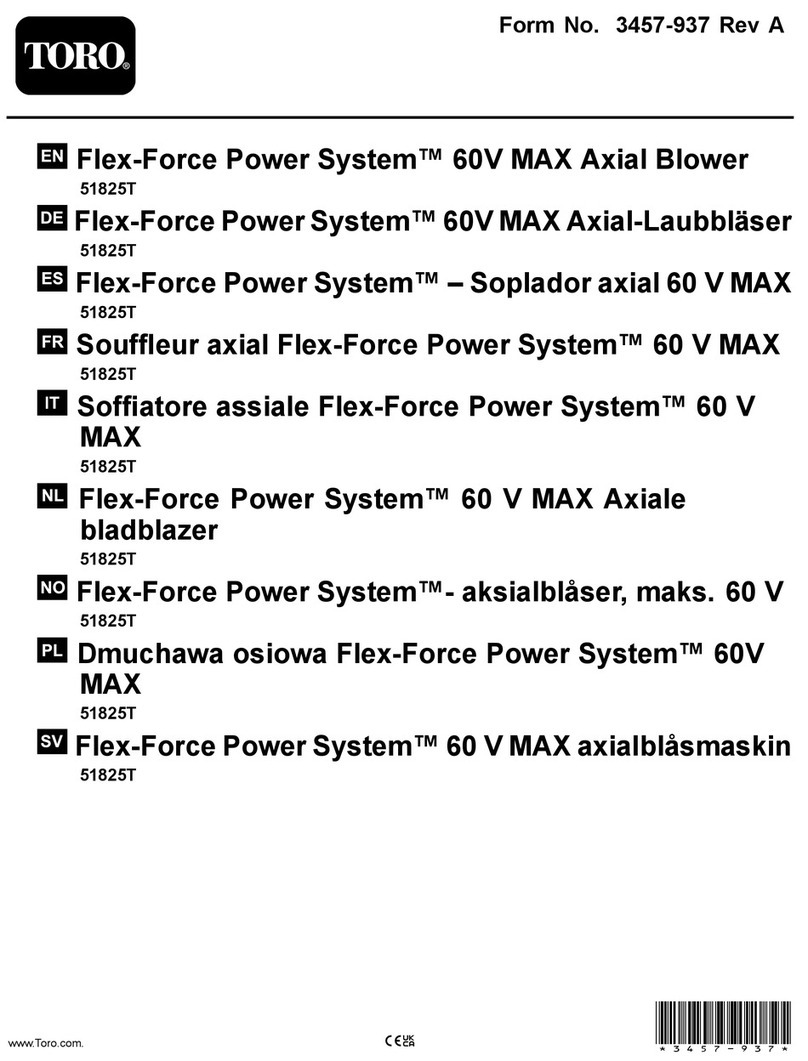
Pro Sweep
Page 1 -- 2
Safety
Safety Instructions
The Pro Sweep is designed and tested to offer safe ser-
vice when operated and maintained properly. Although
hazard control and accident prevention partially are de-
pendent upon the design and configuration of the ma-
chine, these factors are also dependent upon the
awareness, concern and proper training of the person-
nel involved in the operation, transport, maintenance
and storage of the machine. Improper use or mainte-
nanceof themachinecanresult ininjuryordeath. Tore-
duce the potential for injury or death, comply with the
following safety instructions.
WARNING
To reduce the potential for injury or death,
comply with thefollowing safetyinstructions.
Before Operating
1. Read and understand the contents of the Operator’s
Manual before operating the machine. Become familiar
with the controls and know how to stop the sweeper
quickly. Additional copies of the Operator’s Manual are
available on the internet at www.Toro.com.
2. Keep all shields, safety devices and decals in place.
If a shield, safety device or decal is defective, illegible
or damaged, repair or replace it before operating the
machine.
3. Make sure that any loose nuts, bolts or screws are
tightenedtoensurethat themachineisinsafeoperating
condition.
4. Make sure that the tow vehicle is carefully selected
to assure the best performance and safe operation of
the Pro Sweep.
5. Assuresweeper interlocksystemfunctionscorrectly
so sweeper brush does not rotate unless sweeper is
positioned below the transport position.
6. Make sure that operator is familiar with tow vehicle
operation.
While Operating
1. Operator should be in the operators position when
operating the tow vehicle and sweeper. Stay away from
the sweeper when the brush is engaged.
2. Make sure that hitch pin is properly positioned in tow
vehicle and sweeper. Hitch pin should be secured with
hairpin clip.
3. Donotruntowvehicleengineinaconfinedareawith-
out adequateventilation. Exhaust fumes arehazardous
and could possibly be deadly.
4. Do not touch tow vehicle engine, muffler or exhaust
pipe while engine is running or soon after it is stopped.
These areas could be hot enough to cause burns.
5. If abnormal vibration is detected, stop tow vehicle
and sweeper immediately and determine source of
vibration. Correct problems before resuming the use of
sweeper.
6. While operating, the Pro Sweep may exceed noise
levels of 85dB(A) at the operator position. Hearing
protection is recommended for prolonged exposure to
reduce the potential of permanent hearing damage.
7. Before leaving the operator’s position of the tow ve-
hicle:
A. Stop sweeper brush by shutting off vehicle hy-
draulic flow to the sweeper.
B. Make sure that dump hopper is lowered.
C. Ensurethat vehicletractionlever isin neutral,ap-
ply parking brake, stop engine and remove key from
ignition switch.
8. Position sweeper on level surface, empty hopper
and chock sweeper wheels before disconnecting Pro
Sweep from tow vehicle.
